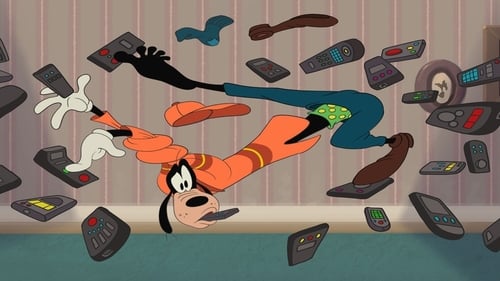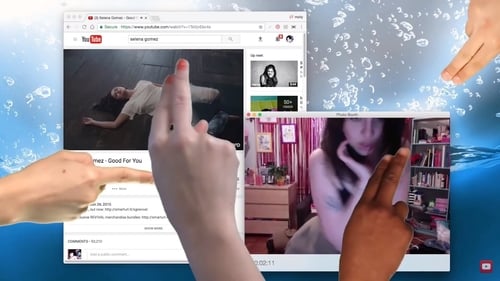The Hammer in the Head (2017)
Жанр : документальный, драма, документальный, драма
Время выполнения : 21М
Директор : Bonella Holloway
Краткое содержание
By becoming aware of an idea that is new to us, we talk about it all the time. And beyond that, all the subjects that we approach, we approach them through this new prism. We are going as far as proselytism - essentially to convince ourselves. We repeat the same words, slightly reformulated, until we are convinced. It is a way of swallowing our conditioning to this idea, while hinting that we are already sure. In politics or in love. We repeat ourselves. We repeat ourselves. We repeat ourselves.

«Квадрат» — новый экспонат шведской галереи, призванный вызывать у горожан приступы любви и альтруизма. По крайней мере, так задумал куратор Кристиан с внешностью и сладкой жизнью Марчелло Мастрояни: коллеги, арт-тусовка, девушки — все от него без ума. Но когда средь бела дня у Кристиана крадут бумажник и телефон, он садится в свою Теслу и пускается в авантюру-реванш. Поначалу шутливое наказание воришек приводит к последствиям, которые заставят Кристиана забыть и «Квадрат», и его заповеди.

«Квадрат» — новый экспонат шведской галереи, призванный вызывать у горожан приступы любви и альтруизма. По крайней мере, так задумал куратор Кристиан с внешностью и сладкой жизнью Марчелло Мастрояни: коллеги, арт-тусовка, девушки — все от него без ума. Но когда средь бела дня у Кристиана крадут бумажник и телефон, он садится в свою Теслу и пускается в авантюру-реванш. Поначалу шутливое наказание воришек приводит к последствиям, которые заставят Кристиана забыть и «Квадрат», и его заповеди.

Portrait of Andy Goldsworthy, an artist whose specialty is ephemeral sculptures made from elements of nature.

Portrait of Andy Goldsworthy, an artist whose specialty is ephemeral sculptures made from elements of nature.

2 Small Channel Video Installation, featuring a monologue excerpted from an untitled novel by Alissa Bennett

2 Small Channel Video Installation, featuring a monologue excerpted from an untitled novel by Alissa Bennett

Each pixel is separated like an exploded screen, set in a chaotic way into the space. The video has a whole movement in the room, as one three dimensional image. The experience resembles the brain, working with electromagnetic waves and low voltage information.

Each pixel is separated like an exploded screen, set in a chaotic way into the space. The video has a whole movement in the room, as one three dimensional image. The experience resembles the brain, working with electromagnetic waves and low voltage information.

Однажды Гуфи, сидя дома и смотря любимую игру, заметил как соседу завозят новенький, большой, домашний кинотеатр. Это никуда не шло в сравнение с его мини-телевизором, на котором постоянно приходилось двигать антенну чтобы не было помех. С этого момента Гуфи собирается купить себе всё необходимое, чтобы провести просмотр любимой игры с максимальным качеством и комфортом.

Однажды Гуфи, сидя дома и смотря любимую игру, заметил как соседу завозят новенький, большой, домашний кинотеатр. Это никуда не шло в сравнение с его мини-телевизором, на котором постоянно приходилось двигать антенну чтобы не было помех. С этого момента Гуфи собирается купить себе всё необходимое, чтобы провести просмотр любимой игры с максимальным качеством и комфортом.

Bass takes over the upstairs Kanter-McCormick Gallery at the Art Center, expanding the territory of her gothic world in a new work The Latest Sun is Sinking Fast, an immersive, multi-channel installation incorporating 16mm film/video, sound, architecture, and featuring performances by Sarah Stambaugh, Bryan Saner, and Matthew Goulish. The solo exhibition features a spatial narrative installation that delves, through movement, texture, sound, and gesture, into the psychology of a recurring figure in Bass' previous films; while also introducing two new characters, blending the past into the present. Bass has designed the installation by altering the gallery, leading the viewer through a evocative memory of place, embedding us in a timeless society of lost souls in a haunted landscape. -Allison Peters Quinn, Exhibition Director, Hyde Park Art Center

Bass takes over the upstairs Kanter-McCormick Gallery at the Art Center, expanding the territory of her gothic world in a new work The Latest Sun is Sinking Fast, an immersive, multi-channel installation incorporating 16mm film/video, sound, architecture, and featuring performances by Sarah Stambaugh, Bryan Saner, and Matthew Goulish. The solo exhibition features a spatial narrative installation that delves, through movement, texture, sound, and gesture, into the psychology of a recurring figure in Bass' previous films; while also introducing two new characters, blending the past into the present. Bass has designed the installation by altering the gallery, leading the viewer through a evocative memory of place, embedding us in a timeless society of lost souls in a haunted landscape. -Allison Peters Quinn, Exhibition Director, Hyde Park Art Center

An installation containing video files of the artist's persona, alongside a karaoke piece of her as she watches her viewership fall and two mirrors side by side of messages she received, from two different users online.

An installation containing video files of the artist's persona, alongside a karaoke piece of her as she watches her viewership fall and two mirrors side by side of messages she received, from two different users online.

Wang’s work investigates the ways in which sound and listening can play pivotal roles in shaping social space. For Music While We Work, Wang assembled a group of retired workers from a Taiwanese sugar refinery in the small industrial town of her childhood. She and her collaborator, the political activist and composer Chen Bo-Wei (Taiwanese, born 1971), led a series of recording workshops for the retirees and their spouses. They then returned to the factory, where Wang asked them to “paint a world composed by their listening.”

Wang’s work investigates the ways in which sound and listening can play pivotal roles in shaping social space. For Music While We Work, Wang assembled a group of retired workers from a Taiwanese sugar refinery in the small industrial town of her childhood. She and her collaborator, the political activist and composer Chen Bo-Wei (Taiwanese, born 1971), led a series of recording workshops for the retirees and their spouses. They then returned to the factory, where Wang asked them to “paint a world composed by their listening.”

This three-channel video installation by James Benning shows three scenes from David Wark Griffith’s The Birth of a Nation (1915). The two-minute-long screen arrangement of imperceptibly moving images alludes to the beginning of racism. The three screens each show a solider in the American Civil War, black slaves picking cotton in the field, and imposing KKK.

This three-channel video installation by James Benning shows three scenes from David Wark Griffith’s The Birth of a Nation (1915). The two-minute-long screen arrangement of imperceptibly moving images alludes to the beginning of racism. The three screens each show a solider in the American Civil War, black slaves picking cotton in the field, and imposing KKK.

Past and present life in the anarchistic "free city" of Christiania, in Copenhagen, Denmark. In Sandra of the Tuliphouse or How to Live in Free State, Christiania is approached at face-value, as a self-described laboratory of freedom, an environment that provides an almost unparalleled opportunity to unravel a very particular history of markedly contrasting power relations and vivid social forces. Borrowing from the usually dispirit practices of cultural geography and fictional narrative the project is constructed as a visual, spatial, and aural investigation of the site. The situation at Christiania in 2001 is compared with its distant past as a military base, its more recent utopian regeneration, and its possible future.

Past and present life in the anarchistic "free city" of Christiania, in Copenhagen, Denmark. In Sandra of the Tuliphouse or How to Live in Free State, Christiania is approached at face-value, as a self-described laboratory of freedom, an environment that provides an almost unparalleled opportunity to unravel a very particular history of markedly contrasting power relations and vivid social forces. Borrowing from the usually dispirit practices of cultural geography and fictional narrative the project is constructed as a visual, spatial, and aural investigation of the site. The situation at Christiania in 2001 is compared with its distant past as a military base, its more recent utopian regeneration, and its possible future.






